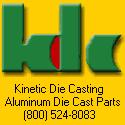From forcing molten metal under high pressure into tooling cavities, products from and for cast parts are formed. Cast parts, as we know it, is one fine way to produce small to medium sized parts that has good and intricate details, delicately formed surfaces, and that has consistency in dimensions making it as a very welcomed addition in the part production industry.
Now, some of you may wonder what materials are used in this very clever process. With cast parts, raw materials and elements (or non-ferrous metals as they are properly called) like zinc casting, copper, aluminum casting, magnesium, lead, and tin based alloys are used. These non-ferrous metals, as their collective name suggests, contains no trace of iron. And although these are the materials that are commonly used, ferrous materials (or materials that has traces of iron) can also be used in this process.
And the process itself, you may ask? Well, a cast part begins with closing the mold after being sprayed with a lubricant. By spraying lubricant on the mold, the temperature of the die can easily be controlled and the removing the cast later on will be much easier. After this first step, molten metal that is under high pressure of around 10—175 MPa (1,500—25,000 psi) is shot into the die. This amount of pressure is kept once the die is filled and until it is totally solidified. Filling the die by using a high-pressure injection is done so that the whole cavity would be filled before parts of the entire casting hardens. Moreover, using a high-pressure injection helps makers avoid irregularities in form even if there are parts of the cast that are not easy to fill due to its irregular shape.
And with a process as long as this one, one can be sure that the results will be beautiful die casted parts.



